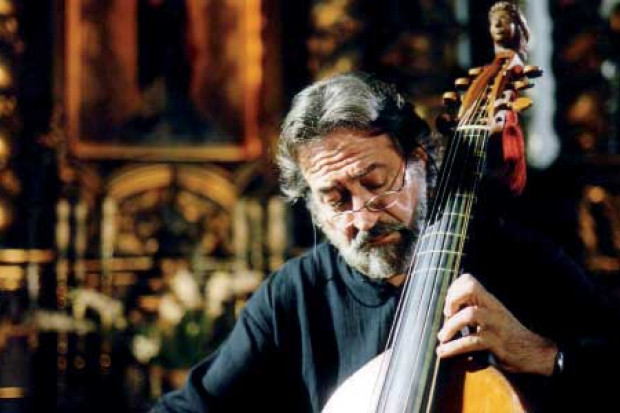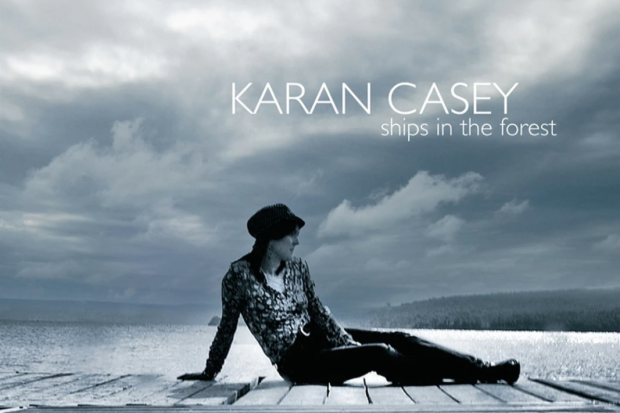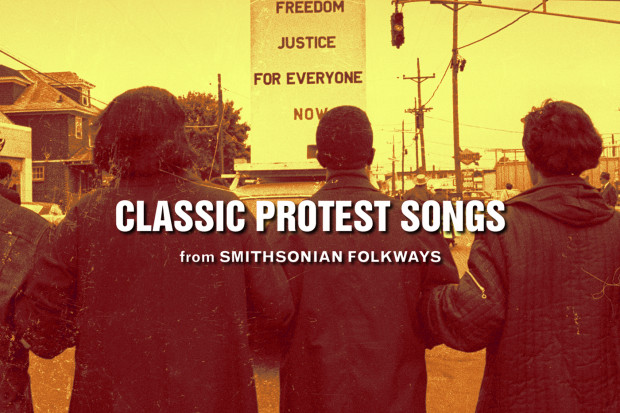On Going Solo
Looking through recent issues of JMI, I was struck by the insight we are getting into the extent of ‘commercial’ sound recording and production that is being instigated or led directly by musicians themselves. In particular, I’ve been keeping an eye on the stocktaking exercise that is carried out in every issue by the Contemporary Music Centre and Taisce Cheol Dúchais Éireann/Irish Traditional Music Archive (ITMA).
One thing that stands out for me is the ephemeral or at least casual nature of many of the entities that produce or publish CDs – these range from individual artists, groups, festivals or other events to small societies, large organisations, student bodies and national cultural institutions of various sorts. This generalisation applies especially to traditional music which is my main subject here but I think it stands scrutiny in contemporary music in Ireland as well.
From time to time I see the odd ‘real’ commercial record company listed among this fine company and in most cases I think immediately of the uninvited ‘guest’ at the party or the hitchhiker who farts in the car. Do you really want to get that close to one of those? And pay for it? You don’t have to these days.
Most of us are accustomed by now to the radically changed environment for making and selling sound recordings. I myself have reluctantly said goodbye to the days of the music cassette as both a mass medium for consumption and as an occasionally furtive currency for transmission. I’ve even given away all my vinyl to a very safe pair of hands. But I’ve also recently recorded a tune from Vincent Campbell, the master fiddler from Glenties, on a mobile phone so I could learn it later on.
The power and cost of technology have now soared and plummeted respectively, to the extent that the traditional control-based monopolistic model of the record company is almost a dead duck. No loss there. So right now and for another little while we can look on with a mixture of smugness (we told them this would happen) and alarm (we know they haven’t gone away) at the discomfort of the big companies as they try to come to terms with the collapse of their monopoly.
After reading John McLachlan’s reflections on recording in ‘Receiving Music’ beside Toner Quinn’s views on a traditional music ‘Generation Gap’ (JMI, Jan-Feb 2005) and with the CMC/ITMA stocktake in the same issue fresh in my mind, I got to thinking about traditional music and recording. Not so much about why people feel the need to record or how timely or well judged their efforts might be, but how they fare with their projects in this changing and, in theory, more accessible and democratic environment.
What’s happening to traditional music in among the democratised technology, the self-reliance of musicians, their direct access to audience and buyers, the relative ease of dissemination through direct sales, the internet and radio, and what might be the role of the established record companies?
My conclusion is that times are good for traditional musicians, for their music and for listeners who want to hear their music, but I also reflected on the traditional music CDs that I had bought, listened to and most enjoyed over the last two or three years. I know now that a large part of the enjoyment and respect that I have felt for these has been grounded in the sense of self or personality that musicians can bring fully to their work when they are in charge. Most of these, I must add, have been produced by the growing majority of traditional musicians who do it themselves, independent of any established record company.
These days, I doubt if you can really count any of the surviving companies aside from Cló Iar-Chonnachta as serious contributors in terms of making records any more. Selling rather than making is the game. The combination of judgement, expertise, style and focus that went with being a good record maker is now in the hands of the many, not the few. When companies stopped using it, they started losing it.
My Love is in America
This situation was brought home to me recently regarding Claddagh Records. With discomfort I read the badly (cheaply?) printed, heavy-handed and often irrelevant notes to one of the best records of solo uilleann piping that has been made in years – My Love is in America (CCF37CD) by David Power. This is a relatively rare foray into record making (or licensing?) by the seemingly dormant Claddagh and I’ll return to Claddagh’s performance presently.
Power gives us a consistently impressive and engaging performance, in parts sounding like Séamus Ennis without the irritating scrappiness or blunders that mar most of Ennis’ recorded legacy, and individual enough in his approach to be distinctive. I found some variability in the quality of the sound recording but generally the album holds together well, not always easy for a solo piping recording.
Overall this is a satisfying and confident musical self-portrait of a talented, sensitive and imaginative player. The final track on the album includes a version of ‘The Bucks of Oranmore’, coupled here with ‘George White’s Favourite’. Why ‘The Bucks’ is so consistently consigned to be the last tune of a night’s music, of a concert or of an album is beyond me. Perhaps it’s something to do with the alleged difficulty or complexity of the piece itself, not that it’s the finest of reels by any means. The playing here shows the extent to which Power can manage a fine balance between grounding his approach quite firmly in the Ennis style and still managing to retain his own personality.
Another track that impressed me was the flowing treatment of the hornpipe and set dance medley ‘The Standing Abbey’ and ‘Madame Bonaparte’ where Power’s easy command of the full instrument really stands out. I thought his regulator playing here, in particular, deserves close scrutiny. Slow airs are well represented and excellently performed on this album and track 5 and 12, ‘Amárach lá ‘le Pádraig’ and ‘Mná Bhaile Loch a’ Riach’, are fine performances in which Power expertly works the dynamics of the chanter to impressive effect. ‘The Fox Chase’ was perhaps the one performance on the album that came across as slightly strained and uneven in phrasing although again Power gives a fine illustration of intelligent regulator playing.
When Power’s voice is heard in the liner notes it makes sense, it helps to locate him and his music. However, others including the founder of Claddagh, Garech a Brún, along with Count Randal Mac Donnell, Mac Dhomhnaill na nGleann and the Deputy Chief Herald of Ireland join forces to produce dully written, leaden genealogical information and speculation which contribute nothing to this production other than evidence of otherwise unpublishable and laboured ramblings. I doubt if Claddagh would have done this to an artist when the company was on its game. Likewise I’d be surprised if Power would have commissioned these lads to do this to his album were he doing it entirely himself. Sup with the devil, et cetera.
Dancing on Silver
What a relief to be able to produce evidence that I Did It My Way is the way ahead! Croisín Music is the name for the excellent enterprise of Tim Collins whose album Dancing on Silver – Irish Traditional Concertina Music (CM001) shows him to be a mature and inventive performer equally at home with the repertoire classics and with recent compositions. His touch is light and measured, his selection and combination of tunes is very well judged and above all his grounding within his local musical style equips him with all he needs to explore the full range of repertoire.
Collins is joined by seven other very able and respected musicians at various stages on this recording for both unison and chordal accompaniment, but I don’t mind saying that to my ear the general effect was one of relaxed, competent and rather flat playing, pleasant but ultimately somewhat distracting and wearing on the ear. Because of the beautiful strength, flow and tone in his playing, I’d like to have heard more solo and unaccompanied playing.
That said, I was really captivated by the opening track where Collins shows his deep and accurate understanding of jig playing (‘Kit O’ Mahony’s’/’Paidín Ó Raifearta’/‘Neary’s’). The outstanding track for me features Collins playing reels on a beautifully toned A-flat/E-flat instrument on track 4. This includes a colourful version of ‘Seán Mháire Mhicilín’ which he attributes to another fine concertina player Micheál Ó Raghallaigh and the playing is simply excellent. Where Collins shines is in his sense of rhythm which is finely supported by his measured use of ornamentation and variation. Another great example of this is on track 7 where he plays a set of three slides (‘Dan Curtin’s’/’Bridgie Con Matts’/’The H Note’) and shows us just how much music these very simple and almost primitive tunes can carry and there is something about the sound and texture of the instrument that brings these to a new level of enjoyment for me.
All of Collins’ notes to Dancing on Silver help us make sense of the player, where he comes from and how he manages his life with music, and Gearóid Ó hAllmhuráin gives a solid and warm biographical introduction which adds greatly to the production. The standard of photography (Christy McNamara), design (Kathy Howard) and overall production mirror the best of what some record companies used to do and probably now cannot be bothered to do in presenting good quality traditional music to a high professional standard.
It can only be a good thing when the artists themselves can set and attain high industry standards for recording and selling traditional music. Maybe the best thing that could happen now is for the accountants in the record companies to take control and stay well away from making good records badly, and instead earn their keep by sticking to selling and marketing while the new industry experts get on with making the records.
Published on 1 May 2005
Dermot McLaughlin is a fiddle player and currently Chairman of the Irish Traditional Music Archive.














